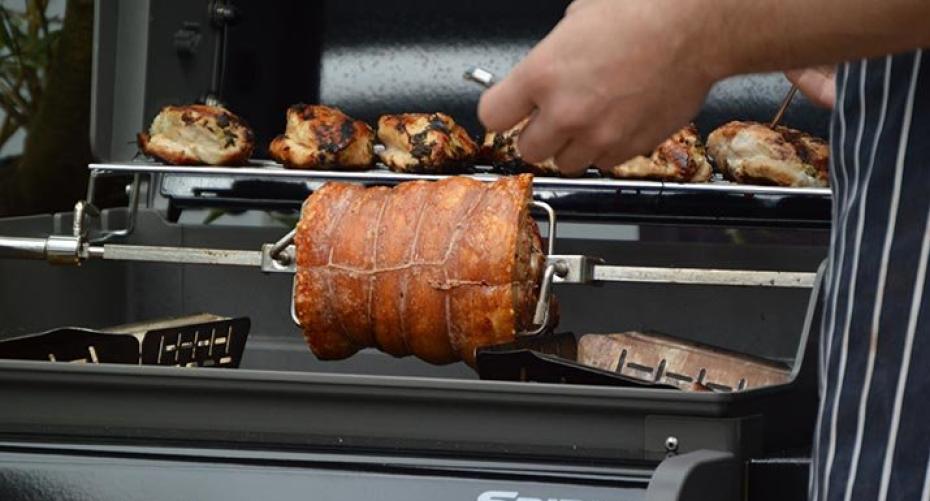Master the different heat zones on the BBQ with this handy guide
There are two distinct areas of cooking on the barbecue; direct and indirect. Direct cooking involves cooking directly over the hottest part of the barbecue, usually the centre. Indirect cooking is carried out over the cooler parts of the coals, usually towards the sides of the barbecue. Using the char baskets to keep the charcoals contained at the sides of the barbecue can make it easier to define the hot and cooler areas of the grill.

Image: Salmon with pesto
Direct cooking is ideal for foods which can be cooked quickly over a short period of time; such as beef, lamb and pork in the form of steaks, chops, burgers, sausages or kebabs. Pizza also needs just a few minutes over a high heat; if putting roasted vegetables onto a pizza cook them first over a high heat then put them onto the pizza before cooking. Slices of solid ‘meaty’ vegetables, such as aubergines, courgettes, onions, peppers and mushrooms also benefit from a fast, hot cook which results in the lovely caramelised sear marks. Small whole fish, such as sardines, whitebait and mackerel which still have the skin on can be cooked on the direct heat, in a fish basket, as the skin gives some protection from the searing coals. Most kebabs can be cooked quickly as they usually consist of small pieces of meat, fish, vegetables and fruit; try and keep the chunks of food all the same size so that they cook evenly.

Image: Spatchcock chicken with roasted new potatoes
Indirect cooking is perfect for cooking the more delicate foods and those which need a slower cook in order to cook them thoroughly, such as chicken which you need to carefully cook in order to avoid the dreaded salmonella. Delicate vegetables include asparagus, mange tout, sugar snap peas and spring onions; corn on the cob also benefits from a slower cook otherwise the outside burns before the inside of the corn is done. Joints of meat cooked long and slow are done over indirect heat for lovely crispy crackling, tender beef or crispy chicken skin. This is the ideal way to achieve perfect pulled pork, which needs a high internal temperature, 95C (203F), in order to break down the membranes and render the fat to keep the meat lovely and moist and flavoursome. Larger pieces of fish need cooking slowly so you don’t get the outside burned and the inside raw. Indirect heat is also used for baking cakes; just remember to raise the cake tin off the grate on another upside-down cake tin and close the BBQ lid.

Image: Sunday lunch cooked on the Weber Genesis
Food cooked using the Weber Gourmet Barbecue System (GBS) can either be direct or indirect depending upon what you are cooking; direct heat can be used for the sear grate, waffle iron, a stir fry or fish and chips in the wok. If you are cooking a risotto in the wok or a casserole in the Dutch oven then they need to be cooked slowly on the cooler part of the barbecue.
Once you have mastered the basics of cooking over the different heat zones on your BBQ you can wave goodbye to raw chicken and burned burgers and you are on your way to becoming a BBQ Masterchef!


